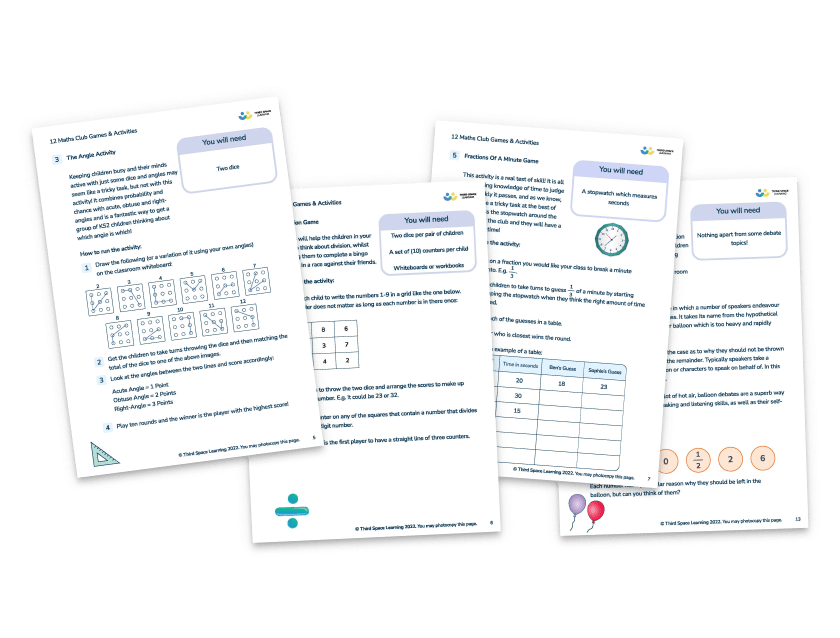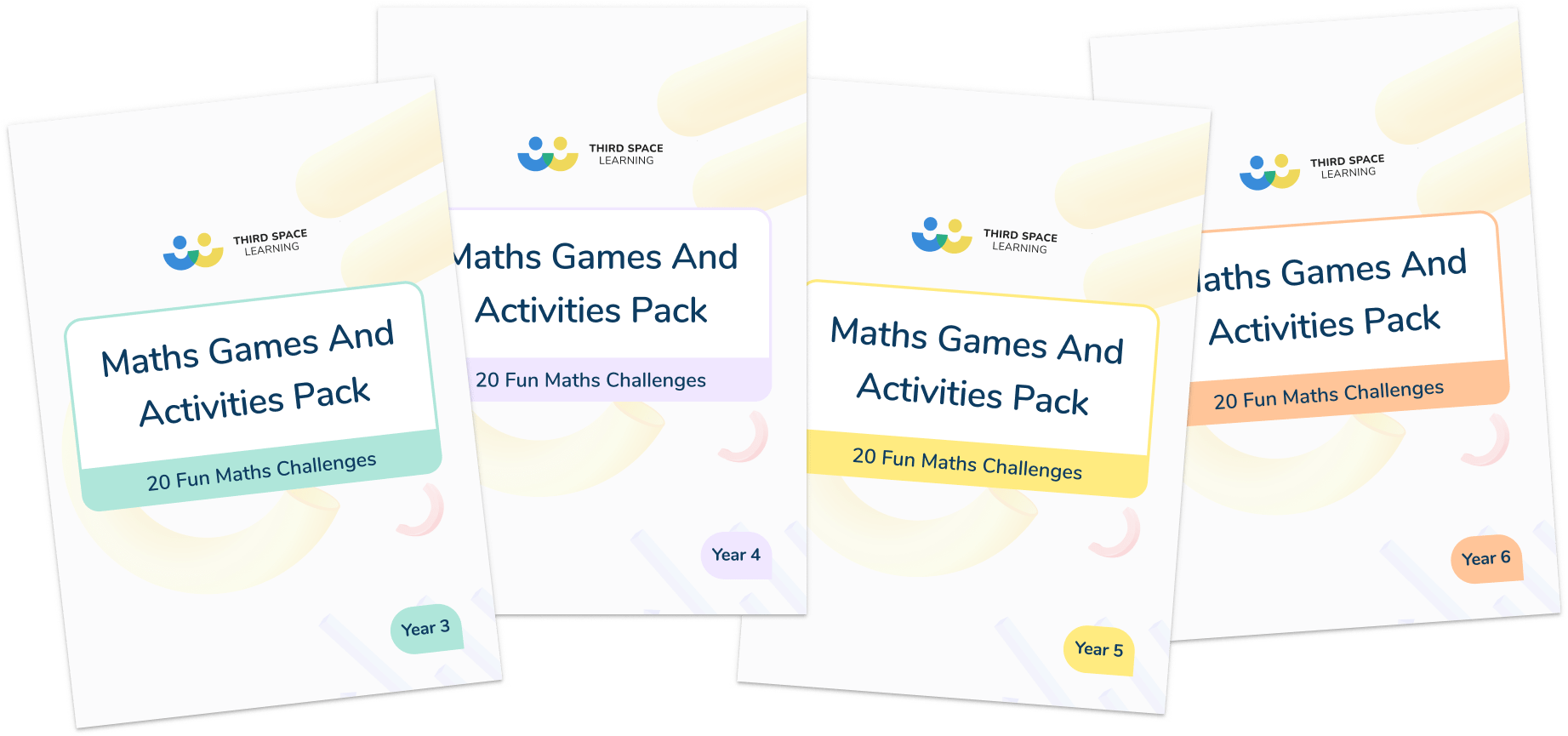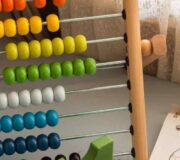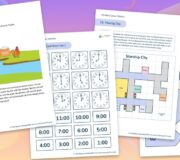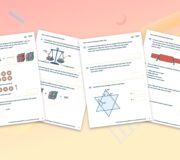14 Famous Female Mathematicians Who Have Changed The World & What We Can Learn From Them
Chances are you’re probably well aware of Newton, Einstein and Turing, but when it comes to famous female mathematicians, their achievements are less well known.
Unfortunately, there is a stereotype that still prevails today that maths is a male subject and that girls are no good at it.
Fortunately though, that couldn’t be any further from the truth, and so in celebration of International Women’s Day we’ve put together a fabulous list of some of the world’s greatest famous female mathematicians that you can use all year round.
We hope you can use these inspirational individuals and their incredible work to show children that maths is all about the journey of discovery, not someone’s gender.
Gender inequality in maths and engineering
In her 2013 Guardian post ‘Why are there so few female Maths professors in UK universities?’, Lucy Ward states ‘here’s any easy sum: if 94% of Maths professors in British universities are men, what percentage are women?’.
The answer is of course telling, and today there has been little improvement. The Women’s Engineering Society, offers some useful statistics on women in STEM in the UK, and it’s not great. For example:
‘Women make up 16.5% of all engineers‘. Though this is a 6% rise since 2010, there’s still a long way to go.
More women in maths? It starts in the classroom
The idea that our young learners may feel they should not approach or are not suited to a particular field of work is heartbreaking. As teachers, we want our pupils to feel they can do anything. What we definitely don’t want is for them to feel they cannot do something because of their gender.
Our female learners should never feel like they can’t – or shouldn’t – do Maths because it’s a ‘boy’s subject’. These perceptions always start at a young age which means changing them must start in the classroom.

Meet Skye, the voice-based AI tutor making maths success possible for every student.
Built by teachers and maths experts, Skye uses the same pedagogy, curriculum and lesson structure as our traditional tutoring.
But, with more flexibility and a lower cost, schools can scale online maths tutoring to support every student who needs it.
Watch Skye in action1. Maryam Mirzakhani, 1977-2017
What Maryam did: Iranian-born Maryam Mirzakhani was one of the greatest mathematicians of her generation, making exceptional contributions to the study of the dynamics and geometry of mathematical objects called Riemann surfaces.
She was a professor at Stanford University and held a Ph.D from Harvard University. In 2014, she was the first woman, and first Iranian, to be awarded a Fields Medal (also known as the International Medal for Outstanding Discoveries in Mathematics) for “her outstanding contributions to the dynamics and geometry of Riemann surfaces and their moduli spaces”.
Maryam’s impact: Her work had a huge impact in shaping her field and has opened up new frontiers of research that are just starting to be explored. She shows us that, even in a male-dominated field, women can be role models and lead the way forward with their discoveries.

2. Katherine Johnson, 1918 – 2020
What Katherine did: Falling in love with maths from a young age, Katherine studied the subject alongside French at university, graduating summa cum laude at the age of just 18! She joined NASA in 1953 and her contributions in orbital mechanics were crucial to the success of the USA’s aeronautics and space programmes. In 2015, she was presented with the Presidential Medal of Freedom by Barack Obama for her important work as a mathematician, physicist and space scientist as a woman of colour.
Katherine’s impact: Despite being one of the first three black women to attend West Virginia University, she dared to challenge the stereotypes which existed around her and has since become a pioneering example and role model for females everywhere of African American women in STEM.
She was responsible for calculating the trajectory for Project Mercury and the Apollo 11 flight to the moon, which means she helped the first spaceship and the first Americans reach the moon! Believing that “everything is physics and math(s)”, she encouraged girls to pursue careers in STEM and often gave talks on the subject.
“Girls are capable of doing everything men are capable of doing.”

KS2 Maths Games and Activities Pack
A FREE downloadable games and activity pack, including 20 home learning maths activities for KS2 children to complete on their own or with a partner.
Download Free Now!3. Dame Mary Lucy Cartwright, 1900-1998
What she did: Mary Cartwright was a British mathematician and a woman of many firsts! She was not only the first woman to obtain a first in her university degree, but also one of the first mathematicians to study what is now known as chaos theory. She was the first woman to receive the Sylvester Medal (awarded for the encouragement of mathematical research), the first woman to be President of the Mathematical Association and the first woman to be President of the London Mathematical Society.
Mary’s impact: Thanks to her bravery in daring to defy the status quo, her work has gone on to strongly influence the modern theory of dynamical systems, and she even has a mathematical theorem named after her!

4. Sofia Kovalevskaya, 1850 – 1891
What Sofia did: Russian mathematician Sofia Kovalevskaya made monumental contributions to analysis, partial differential equations and mechanics. She was a pioneer and icon for females in mathematics and STEM subjects everywhere.
The first woman to obtain a doctorate in mathematics, she went on to gain global recognition in the mathematical community due to her paper on partial differential equations and was awarded the Prix Bordin from the French Academy of Sciences, a prize given to the best solution of a specific mathematical problem.
Sofia’s impact: Despite scrutiny and doubts from her male counterparts and society as a whole, Sofia refused to give up academia and has paved the way for other famous females mathematicians to follow in her footsteps!

5. Sophie Germain, 1776 – 1831
What Sophie did: Marie-Sophie Germain was a French mathematician and physicist who, despite opposition from society (and her parents) due to her sex, persevered and went on to greatly contribute to maths. Due to the unfair gender restraints at the time, she was not able to pursue a career in the subject, but that did not stop her!
She worked on it independently throughout her life and through her hard work, she not only advanced the field of number theory, but was also one of the pioneers of elasticity theory, becoming the first woman to win the grand prize from the Paris Academy of Sciences for her essay on the subject.
Sophie’s impact: She proved to the people around her that their assumptions based on her sex were wrong and that females are incredible mathematicians. Although she was not allowed to attend university, thanks to her unfaltering determination and bravery she became the very first woman to make important original contributions to mathematical research and in doing so, carved out the way for women today.

6. Marjorie Lee Browne, 1914-1979
What Marjorie did: Gifted African-American mathematician and educator Marjorie Lee Browne was the first black woman to gain a doctorate in maths. She joined the faculty at North Carolina Central University, shortly after obtaining her Ph.D, where she taught for over thirty years. She was named chair of the Mathematics Department there in 1951, which allowed her to guide the way for some of the earliest computer use in her field.
Marjorie’s impact: She noted that the lack of involvement of black women in STEM subjects was a huge societal issue that needed to be addressed and believed that education was a viable solution. She took advantage of her position as department chair at NCCU to gain a grant to educate secondary school teachers in advanced maths and spent much of her time with local secondary school teachers teaching them about linear algebra, encouraging them to study and obtain advanced degrees and improving the level of maths education as a whole in North Carolina. Her dedication to inspiring confidence in female mathematicians and providing quality education to others for the greater good, has helped her to become a role model for women in STEM everywhere.
“If I had to live my life again, I wouldn’t do anything else. I love mathematics.”

7. Rachel Riley
What Rachel did: Television presenter Rachel Riley studied Mathematics at Oxford University. At age 22 she joined Countdown where she applies her maths skills on a regular basis, handling the letters and numbers rounds to find solutions to complicated problems. She has gone on to present other shows including 8 Out of 10 Cats Does Countdown and The Gadget Show, and even starred as a contestant on Strictly Come Dancing!
Rachel’s impact: Riley has visited many schools over the years in an endeavour to inspire children on the “joys of applied maths, quantum mechanics and time travel” and increase the numbers of females participating in STEM subjects. She has shown us that pursuing your passion and studying maths at university can lead to us down different avenues, including less conventional ones such as a career in television!
“There’s no reason for men to be better at maths than women – it’s just about our perception.”

8. Malala Yousafzai
What Malala did: Malala Yousafzai is a Pakistani activist for female educational rights, and the youngest person to win the Nobel Peace Prize, at just age 17! She started participating in activism when she was only 11 years of age and began writing blogs for the BBC detailing what life was like under Taliban rule and her beliefs on the important role education plays for girls across the world – and especially in Pakistan.
In her home province of Swat Valley, girls were banned from attending school by the Taliban. After appearing in the New York Times documentary, she gained global recognition as a speaker on the education of girls, and has brought about huge change in this area ever since.
She took A-Level Mathematics and is currently studying Philosophy, Politics and Economics (PPE) at Oxford University. She has won many awards and has been named one of Time Magazine’s “100 Most Influential People in the World”!
Malala’s impact: Due to the nature of Malala’s work, an attempt was made on her life when she was on her way to school one morning. It was unsuccessful, and she refused to let this stop her fighting for her cause, continuing to give speeches and interviews for women’s educational rights. Her story drove the United Nations to launch a campaign for the education of all of children worldwide, which ultimately led to Pakistan’s first Right to Education Bill.
Malala’s brave and determined actions illustrate that females do have the power to change the world regardless of contemporary societal beliefs and that education can be a force for that change! She also shows us that education is a privilege, so, if we want to go on and study maths, we should!
“Education is neither eastern nor western. Education is education and it’s the right of every human being.”

9. Mayim Bialik
What Mayim did: American actress Mayim Bialik studied neuroscience at UCLA, where she went on to obtain a Ph.D in 2007. She is best known for her role as Dr. Amy Fowler in the comedy The Big Bang Theory, but has starred in countless other television shows and films.
Mayim’s impact: Despite success in her early acting career, Mayim still decided to study neuroscience at university because she had a passion for the subject. She believes strongly in the involvement of women in STEM subjects and has spoken at events on the topic encouraging girls to pursue these disciplines. She also plays the bass and trumpet!

10. Mary Somerville, 1780-1872
What Mary did: Mary taught herself maths at time when education was not thought of as important for girls. In 1827, mary was asked to translate a book by the French mathematician, Pierre Laplace. Her work was an immediate success.
Mary’s impact: Mary continued to do lots of important research for the rest of her life and was given many honours for her work. Her work was so important and famous that Somerville College at Oxford University is actually named after her!

11. Augusta Ada Byron, 1815-1852
What Augusta did: When Ada was a teenager, she was mentored by none other than Mary Somerville! Augusta was incredibly gifted at Maths and as an adult worked with Charles Babbage to translate an Italian memoir. The memoir was about an ‘Analytical Engine’ (a machine that could do simple maths – one of the first computers).
Augusta’s impact: Augusta, did way more than just translate the memoir. She created her own version of notes for the machine and even included a way to calculate more difficult equations. This is now understood to be one of the world’s first computer programmes.

12. Emmy Noether, 1882-1935
What Emmy did: Emmy had her education delayed because of rules against women studying Maths at university. She was very, very clever though and did eventually get a PhD in algebra. She went on to become a Maths professor and developed many mathematical rules.
Emmy’s impact: Her mathematical rules led to other mathematicians – like Einstein – being able to advance maths even further. We would as smart a society today if it weren’t for the work of Emmy Noether!

13. Florence Nightingale, 1820-1910
What Florence did: She is famous for being a nurse who was full of compassion and the founder of modern nursing. What is less well known is that Florence was a statistician who used her work to hugely cut death rates during war.
Florence’s impact: When Florence went to be a nurse in the Crimean war she used statistics to show that lots of the soldiers were dying due to the conditions of the hospitals, rather than from fighting. Florence’s use of statistics helped to show government’s why people were dying. As a result she helped reduce mortality rates in both the army and at home.
In particular she developed lots of innovative graphs and charts which made statistics easy to understand for politicians. Before this time it was not common to represent statistics in this way.

14. Dorothy Johnson Vaughn, 1910-2008
What Dorothy did: Dorothy Johnson Vaughan was an African American mathematician and computer programmer who worked for the National Advisory Committee for Aeronautics (NACA), and NASA. She contributed greatly to the early stages of the American space programme.
Dorothy’s impact: She was considered a “human computer” as she performed complicated computations and analysed data for aerospace engineers. She was the first African American manager at NACA (which later became NASA).

Here’s our complete list of topical maths investigations for year 5 and year 6.
More KS2 maths investigations available for Year 5 and Year 6
We’ve got more fun KS2 maths investigations, all free for UK primary schools based around the following key events in a primary school during Autumn, Spring and Summer Term.
To get the complete set download the latest versions of our topical maths problems:
- Autumn Term topical KS2 maths investigations and problems
- Festive topical KS2 maths investigations and problems
- Spring Term topical KS2 maths investigations and problems
- Summer Term topical KS2 maths investigations and problems
Or follow any links below
Topical maths investigations
- Autumn maths activities
- Halloween maths activities
- Christmas maths activities
- World Book Day Maths activities
- Easter/Lent Maths activities
- Sports Day maths activities
And if that’s not enough we’ve even got maths activities for Year 5 and Year 6 for events you’re likely to celebrate in primary school but their dates can change from year to year.
- World Cup maths activities
- Election maths
- Jubilee or Coronation maths activities
- Football maths activities (UEFA cup or FA cup)
We update these blog posts every year so sign up and look out for our emails.
DO YOU HAVE STUDENTS WHO NEED MORE SUPPORT IN MATHS?
Skye – our AI maths tutor built by teachers – gives students personalised one-to-one lessons that address learning gaps and build confidence.
Since 2013 we’ve taught over 2 million hours of maths lessons to more than 170,000 students to help them become fluent, able mathematicians.
Explore our AI maths tutoring or find out about primary school tuition for your school.
